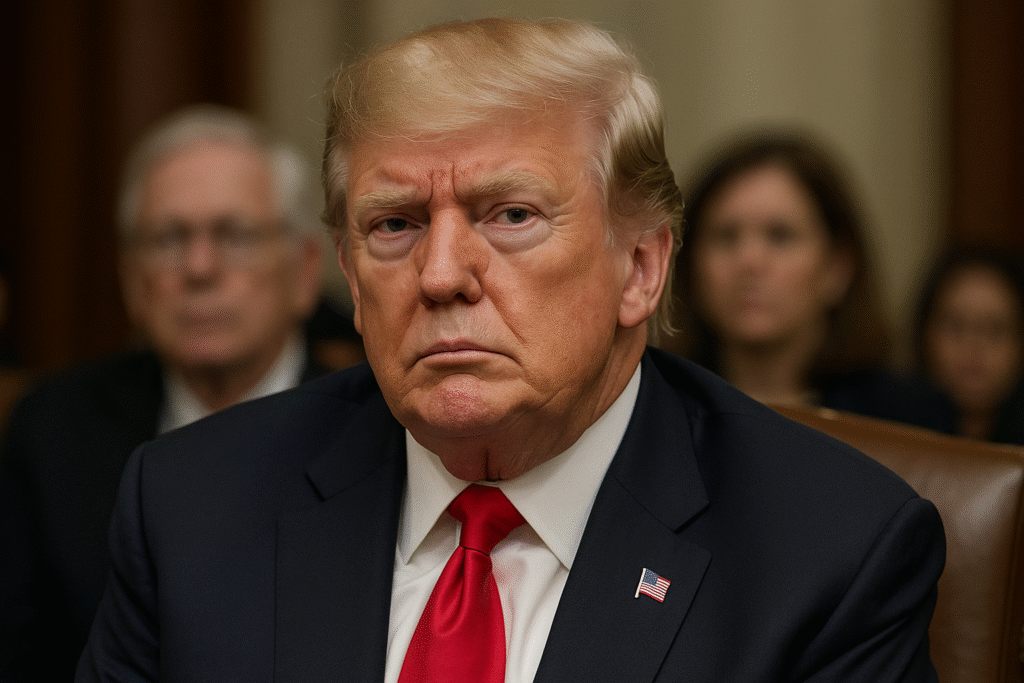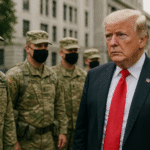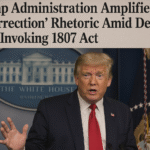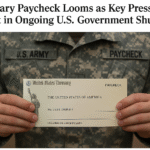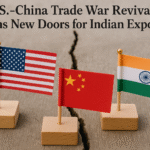By Harshit, WASHINGTON, D.C. — October 16, 2025
President Donald Trump signaled on Wednesday that he may personally attend Supreme Court oral arguments scheduled for Nov. 5 in a case that could determine the future of his protectionist trade agenda. If he follows through, Trump would become the first sitting U.S. president to attend Supreme Court proceedings, a step that has raised both legal and political eyebrows.
High-Stakes Legal Battle Over Presidential Trade Authority
Trump described the upcoming case as “one of the most important cases in the history of our country,” warning that failure could leave the U.S. “a weakened, troubled, financial mess for many, many years to come.” The case centers on the International Emergency Economic Powers Act (IEEPA), which the president has invoked to justify country-specific tariffs imposed earlier this year.
Lower courts have ruled that Trump exceeded his authority under IEEPA, prompting the administration to appeal to the Supreme Court. The arguments will focus on whether the law allows the president to independently impose targeted tariffs on specific countries without explicit congressional approval.
“This is not just a trade case—it’s about the balance of power between the executive branch and Congress,” said Sarah Holton, a constitutional law professor at Georgetown University. “The Court’s decision could set a precedent that limits or expands presidential authority in foreign trade decisions for decades.”
Trump’s Unprecedented Attendance
Trump said he was considering attending the oral arguments in person. “That’s why I think I’m going to go to the Supreme Court to watch,” he said in the Oval Office. If he does, it would mark the first time a sitting president has ever been present during Supreme Court arguments. Historically, the judiciary has maintained a strict separation from the executive branch, and legal experts note that his presence could be interpreted as an unusual exertion of presidential influence.
While the White House has not formally commented on Trump’s plan, the announcement has prompted speculation about potential political messaging. Supporters argue his attendance underscores the stakes of the case, while critics warn it could appear as an intimidation tactic toward the judiciary.
Economic and Political Implications
The Supreme Court ruling carries significant implications for both U.S. trade policy and the broader economy. If the court rules against Trump, it could invalidate several of his major tariffs, disrupting trade relationships with countries like China and the European Union. Markets and industries that have relied on these tariffs to protect domestic manufacturing could face immediate adjustments.
Conversely, a favorable ruling would reinforce the president’s ability to enact unilateral trade measures, potentially emboldening future administrations to use IEEPA for economic sanctions and tariffs without seeking congressional approval. Analysts warn that such a precedent could reshape U.S. trade policy for decades.
“Investors will be watching closely,” said Mark Ellis, senior economist at the Peterson Institute for International Economics. “A ruling that limits presidential authority could create uncertainty, while a ruling in favor of Trump could signal more aggressive trade policies ahead.”
A Broader Constitutional Question
Legal observers emphasize that the case is not solely about trade. The Court’s decision could influence debates over executive power in foreign policy, as it touches on the limits of the president’s ability to act independently under emergency powers.
“The Supreme Court is essentially being asked to decide how far a president can go in using emergency powers to shape economic policy,” Holton said. “It’s a question that could reverberate far beyond the current administration.”
The oral arguments are expected to draw intense scrutiny from Congress, the business community, and international trade partners, all of whom have a stake in the outcome. The ruling could also affect Trump’s broader political legacy, given that tariffs have been a cornerstone of his economic strategy.
Next Steps and Anticipated Timeline
The Supreme Court will hear the case on Nov. 5, with a ruling expected months later. In the meantime, Trump’s attendance—if it occurs—could serve as a powerful symbolic gesture, demonstrating the administration’s commitment to defending its trade agenda.
Legal experts caution that even with the president present, the Court will follow its standard deliberation process, and the outcome remains uncertain. The case has already drawn commentary from trade analysts, economists, and constitutional scholars, all highlighting its potential impact on both markets and governance.
Summary:
President Trump may attend Supreme Court oral arguments on Nov. 5 in a landmark case challenging his authority to impose country-specific tariffs. The outcome could reshape U.S. trade policy, define the scope of presidential power under IEEPA, and impact both domestic markets and international trade relationships.

